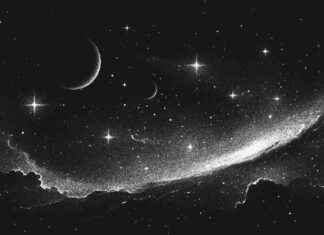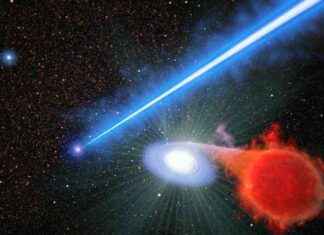Tag: Astronomical observations
Unraveling the Mystery of the Dark Night Sky: The Influence of the Big Bang
I love it when a seemingly simple question leads to profound insight. For example, why is the sky dark at night? At first glance, it may seem like a basic question with an obvious...
Mysterious Nova Explosions Triggered by Supermassive Black Hole Jets: Hubble Telescope Discovery
At the heart of nearly every large galaxy in the universe, there is a supermassive black hole that devours anything that comes too close. When these cosmic monsters consume large amounts of energy and...
Gas and Stars Stolen from Galaxy: Stunning ESO Photo and Video
Gas and Stars Stolen from Galaxy: Stunning ESO Photo and VideoA galaxy located over 160 million light-years from Earth has been robbed of its gas and stars, as captured in a new image from...
James Webb Space Telescope Captures Black Hole Destroying Galaxy – Photo
Using the powerful James Webb Space Telescope (JWST), astronomers have made a groundbreaking discovery that sheds light on the relationship between supermassive black holes and galaxies in the early universe.The galaxy GS-10578, also known...
Sparkling Cosmic Fossil: Hubble Telescope’s Stunning Discovery 3 Million Light-Years Away
The Hubble Space Telescope has recently made a remarkable discovery, unveiling an isolated cosmic fossil that may shed light on galaxy formation. Situated approximately 3 million light-years away from Earth, the Tucana Dwarf galaxy...
Quasar Zapping: Impact on Surrounding Galaxies
Quasars, those enigmatic and powerful sources of light in the universe, have long fascinated astronomers with their ability to influence the galaxies around them. One such quasar, VIK J2348-3054, has recently been found to...
Decoding the Unusual Shape of Dimorphos and Selam: Watermelon-Shaped Asteroids Explained
Astronomers have long been puzzled by the unusual shapes of the tiny asteroids Dimorphos and Selam, but a recent study sheds light on why they look so strange. These "moonlet" asteroids are part of...
Unveiling Hidden Moons: Gaia Telescope Discovers Over 350 Asteroids with Moons
The European Space Agency's Gaia space telescope has made a groundbreaking discovery by spotting potential moons orbiting over 350 asteroids. This discovery has the potential to almost double the number of known binary asteroid...
352 Asteroids with Moonlets: Uncovering Celestial Companions in Space
A new discovery by the European Space Agency's Gaia spacecraft has revealed 352 asteroids in the solar system that are likely accompanied by their own orbiting moons. These systems, known as "binary asteroids," provide...
Uncovering the Mystery of Long-Lasting Meteor Trails
Meteors that streak through the sky leaving behind a persistent afterglow have long intrigued astronomers. A recent study published in the Journal of Geophysical Research: Space Physics sheds light on the mystery behind these...










